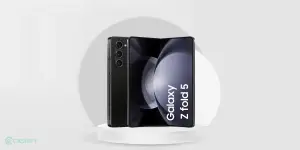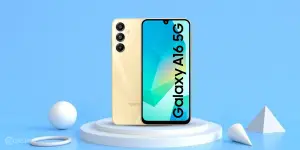Samsung recently announced its new processor Exynos 2400 with the debut of the Galaxy S24 series, two years after the Exynos 2200, its predecessor, was released into the market. On the other hand, Apple introduced the A16 bionic chip two years ago with the iPhone 14 Pro and 14 Pro Max. The A16 is a relatively minor evolution but there are a few changes to be sure, but the average user is unlikely to notice them.
The comparison between the Exynos 2400 vs Apple A16 Bionic is a comparison between a 2024 chipset with a 2-year-old chipset. The comparison between Exynos 2400 vs Apple A16 Bionic sheds light on their performance, capabilities, and the impact they are set to make in the mobile technology landscape.
Also Read: Samsung Galaxy S24 vs iPhone 15 Pro Max
Exynos 2400 vs Apple A16 Bionic: Overview
Both the Exynos 2400 and Apple A16 Bionic are top-tier processors and these chipsets are renowned for their excellent performance, energy efficiency, and advanced technological features. Here’s an overview of the specifications of both CPUs:
| Exynos 2400 | Apple A16 Bionic | |
| CPU | 10-core CPU | 6-core, Kryo CPU |
| CPU Cores | 1x 3.2GHz (Cortex-X4) 2x 2.9GHz (Cortex-A720) 3x 2.6GHz (Cortex-A720) 4x 2.0GHz (Cortex-A520) | 2x 3.36GHz (Everest) 4x 2.02GHz (Sawtooth) |
| Process Technology | Samsung’s 4nm LPP+ | TSMC’s 4nm process |
| GPU | Xclipse 940 GPU based on AMD RDNA 3 architecture, 6-core | Apple GPU |
| GPU Frequency | 1009 MHz | 1398 MHz |
| Memory Storage | LPDDR5X / UFS 4.0 | LPDDR5X / NVMe |
| Camera Capability | Up to 320MP in single-camera mode Dual-camera 64MP+32MP at 30FPS | Up to 200MP in single camera mode Dual-camera 64MP+36MP at 30FPS |
| Video Capability | 8K @ 60FPS HDR, HDR10+, and HLG | 4K @ 60FPSHLG, Dolby Vision, HDR10, HDR10+ |
| Modem | 5G modem up to 12.1Gbps Peak Download up to 3.67Gbps Peak Upload | In-house 5G modem up to 7.5Gbps Peak Downloadup to 3.5Gbps Peak Upload |
| Wi-Fi Support | Wi-Fi 7 | Wi-Fi 6 |
| Bluetooth | Bluetooth 5.4, LE Audio | Bluetooth 5.3, LE Audio, Dual Bluetooth Antenna, aptX Lossless |
| Others | AV1 Codec Support | AV1 Codec SupportNavIC SupportSnapdragon Seamless |
Exynos 2400 vs Apple A16 Bionic: CPU
Samsung Semiconductor produced the Exynos 2400 based on the enhanced 4nm LPP+ process technology and this fabrication method has now caught up to TSMC’s 4nm process node. This is the third iteration of Samsung’s 4nm process node.
This time, Samsung has chosen to use a deca-core CPU and the Exynos 2400 features 10 CPU cores. With one Cortex-X4 prime core clocked at 3.2GHz, two Cortex-A720 cores clocked at 2.90GHz, three Cortex-A720 cores clocked slightly below at 2.60GHz, and four Cortex-A520 tiny cores clocked at 2.0GHz, the Exynos 2400 CPU features a tri-cluster architecture.
Most CPU benchmarks should show performance benefits of 10% or less, since the CPU design hasn’t changed significantly and it only runs at a clock speed up to 7% higher (and with additional memory bandwidth available).
It is evident from a cursory glance at the Geekbench 5 data that the highest single-core CPU performance for A16 Bionic has increased compared to the A15 by about 8–10%. Performance on many cores is marginally better, but those tests probably have an easier time filling the chip’s caches, so they stand to gain from the extra memory bandwidth.
Benchmark Results:
| Exynos 2400 | Apple A16 Bionic | |
| Antutu 10 | 16,47,369 | 14,34,432 |
| GeekBench 6 Single Core | 2189 | 2614 |
| GeekBench 6 Multi Core | 6955 | 6795 |
Also Read: Samsung Galaxy S24 Ultra Vs Samsung Galaxy S23 Ultra
Exynos 2400 vs Apple A16 Bionic: GPU
Comparing the GPU between Exynos 2400 vs Apple A16 Bionic, the Exynos 2400 features a Hexa-core Xclipse 940 GPU that is built on AMD RDNA 3 architecture. It offers hardware-accelerated ray tracing capability, similar to that of the Snapdragon 8 Gen 3’s Adreno 750 GPU. While the specs are quite impressive, but the ray tracing is something that makes a lof of difference and is what makes the gamers excited. While with the A16 Bionic chipset, it features five GPU cores, with a similar architecture as the previous gen.
The Xclipse 940 GPU is about 70% faster than the last-gen Xclipse 920 GPU and the GPU supports 4K displays at 120z and QHD+ displays at 144Hz.
Examining 3DMark Wild Life benchmarks, performance varies from approximately 7% faster on easier modes to approximately 19% faster in the “Wild Life Extreme Unlimited” test. That’s a nice improvement and consistent with what I would anticipate with a significant increase in RAM bandwidth and a slight rise in clock speed.
Exynos 2400 vs Apple A16 Bionic: Connectivity
Unexpectedly, Samsung’s Exynos 2400 chipset includes a functional 5G modem. Using mmWave 5G bands, this modem can provide download speeds of up to 9.6 Gbps and upload speeds of up to 3.67 Gbps. The Exynos 2400 offers support for Bluetooth 5.4, Wi-Fi 7, and AV1 codec in addition to 5G connection.
In contrast, the Apple A16 Bionic is equipped with Apple’s in-house modem, which can deliver up to 7.5 Gbps of peak download speed and 3.5 Gbps of upload speed. Support for Bluetooth 5.3, Wi-Fi 6 and AV1 encoding and decoding are also included.
Exynos 2400 vs Apple A16 Bionic: Multimedia (ISP)
Based on the comparison between Samsung Exynos 2400 and Apple A16 Bionic, both processors demonstrate powerful image signal processing (ISP) capabilities. However, it’s important to note that in depth performance is important in evaluating which ISP is superior. Some factors including colour accuracy, noise reduction, dynamic range enhancement, and low-light performance are important deciding factors.
The benchmark comparisons reveal that the Exynos 2400 is about 30% faster than Apple’s A16 Bionic chipset. Moreover, the comparison emphasizes the significance of the ISP which is as important as the processors that is powering the device.
In the end, the choice between the Exynos 2400 and the Apple A16 Bionic will come down to personal preference. Regardless of which chipset powers your device, you’re in for a top-tier smartphone experience.
Also Read: Exynos 1330 Vs Snapdragon 4 Gen 2
Thinking of buying a refurbished device? Cashify is the best place in India to Buy Refurbished Mobile Phones! Trust Cashify to make a smart choice today and save money!
















